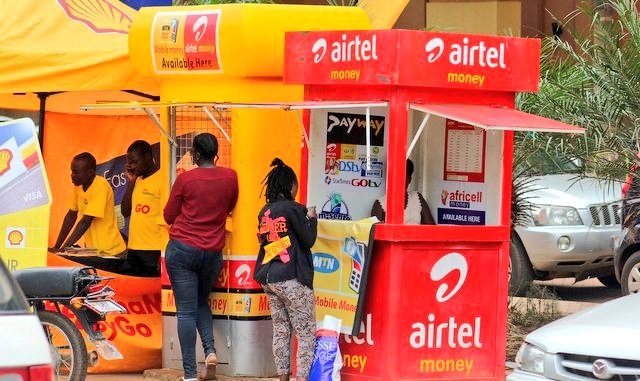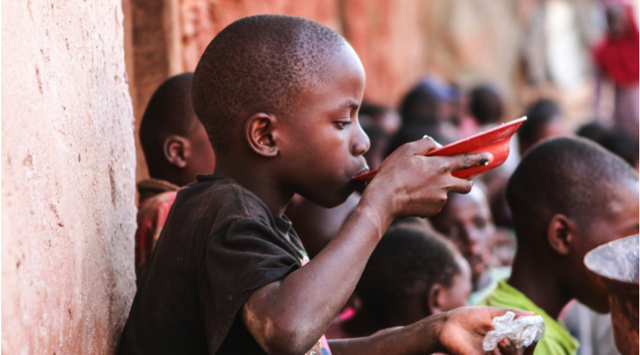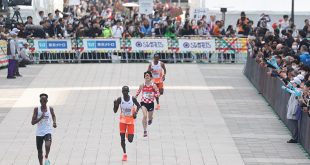
A difficult problem
According to experts, however, providing a safety net for people who are normally not categorized as vulnerable is possibly one of the most difficult problems of COVID-19 cash transfers in many countries. Only countries with strong identification or income tracking programmes have an easier time in identifying potential beneficiaries.
Difficulty in identifying beneficiaries explains why many countries have resorted to other relief tools. Many countries have opted to give cash to everyone in the country. But this means the amounts will be smaller and most will go to people who are not in need.
Some have resorted to employment records for some industries, which could help to identify industries hit hard by the pandemic. But this would exclude informal sector workers.
The Somali Cash Consortium links some of its cash transfers with health systems, so that it can target homes with COVID-19 cases, to ensure those families have enough money that it’s possible for them to quarantine.
According to one report, another tactic is self-selection. This could include a hotline where someone receives the equivalent of about Shs 3500 (US$1) after spending 30 minutes on the phone — a sum that’s low enough to deter those who are not desperate.
The idea is to come up with a clever means of making resources available remotely for people who really need it, but not worth it for people who don’t, one expert said.
The initial suggestion by Prime Minister Nabbanja to use phone records to build income estimates based on people’s transactions, has been used in some countries. Others have used mobile phone surveys.
In Kenya, they considered targeting people depending on where they live and using information on income levels for different areas.
Other options include electronic vouchers — such as something like a debit card — which people can redeem for products from a vendor.
Physical cash is also an option, which can be distributed by local mobile agents of banks. But because the COVID-19 can persist on surfaces, experts encourage use of mobile payments rather than cash. Those supporting the cash transfers often cite the example of Uganda’s neighbour to the east, Kenya.
According to Milkah Chebii, a social protection payments specialist, Financial Sector Deepening Kenya, who has been widely quoted on the issue, the debate in an emergency situation like a COVID-19 lockdown should not be about what cash transfers are critical interventions.
“It should really be how we need to use cash transfers to deploy quickly, faster, and reach as many vulnerable people as we can,” he reportedly said.
According to one report, Kenya has existing cash transfer programmes targeting over a million people, including the elderly and orphans. They receive KShs 2,000 (Approx. Ushs 65, 000) per month. The government gave the programme an additional KShs10 billion (Approx. UShs330 billion) during this pandemic period.
In Uganda, the novelty and uniqueness of the target population for the COVID-19 government cash transfers for the vulnerable means the registers of recipients must be developed from scratch.
Uganda, for example, has the Senior Citizen Grant (SCG) run by the Ministry of Gender, Labour and Social Development under which qualifying elderly citizens in selected districts are given Shs25, 000 per month. But the Minister of Gender says the elderly will not be covered under the COVID-19 cash transfers.
The government is also not relying on data on existing registers of social safety net structures such as the Social Assistance Grants for Empowerment (SAGE), Northern Uganda Social Action Fund (NUSAF), the Public Service Pension Scheme (PSPS), and the National Social Security Fund (NSSF).
 The poor versus the vulnerable
The poor versus the vulnerable
Instead, the government initially said target beneficiaries include bus/taxi drivers and conductors, touts, traffic guides and loaders in the taxi, bus parks and stages. Others are baggage carriers, wheelbarrow pushers in major commercial centres such as Kikuubo in Kampala and car washers. Barmen/barmaids, waiters and bouncers, , djs , and gym, salons, massage parlour, and restaurant workers and food vendors in bus, taxi parks and city arcades are the other groups.
Also included are artistes (including musicians, comedians, producers and promoters), bodaboda riders, special hire drivers and Uber drivers, teachers and support staff in private schools and teachers in government schools not on the government payroll.
These are people who experts describe as not poor but vulnerable to poverty. These are people who normally live above the poverty line because they can earn more than Shs100, 000 per month but can easily slip back below the poverty line at the slightest shock such a COVID lockdown. Technically they are described as people living on an income that is above the national poverty line of Shs3000-Shs3600 per day but on less than double the national poverty line, approximately Shs6000-Shs8000 or about Shs240, 000 a month.
Vulnerable people are different from poor who are people living below the national poverty line which has been fixed at US$0.88–US$1.04 (Approx. Shs3000-Shs3600) per day since 1990. That is equal to Shs100, 000 per month.
Over the past three decades, the percentage of people considered poor had declined dramatically from 56.0% in 1993 to 20.3% according to the 2019/20 National household survey.
Poor people in Uganda are mainly found in rural districts in Karamoja, Acholi, Kigezi, Busoga, Teso, and Lango. In urban centres they are the so-called urban poor and live in high population density areas otherwise called slums.
But according to UBOS, the proportion of the population found to be poor in the 2019/20 Uganda National Household Survey had risen from 18.7% before COVID to 21.9% after COVID out-break. The biggest rise in poverty had occurred in rural areas; from 20.6% before COVID to 26.9% after the COVID outbreak. Poverty in urban areas was holding relatively steady and rising only marginally from 11.2% before COVID to 11.9% after COVID outbreak.
But this could possibly be because more of the urban poor (18%) were migrating back to the rural countryside since the COVID outbreak compared to just 12% of the rural poor who are moving to urban areas over the same period.
The shifting trends of poverty possibly have driven the government to add single mothers and unemployed youth to the list of people to get mobile cash transfers. This is a major departure from the initial description of beneficiaries as people who have lost daily employment income due to the COVID-19 lockdown.
 The Independent Uganda: You get the Truth we Pay the Price
The Independent Uganda: You get the Truth we Pay the Price



Thanks so much cover for the improvement that you are doing for Ugandan people to stop the spread covid 19